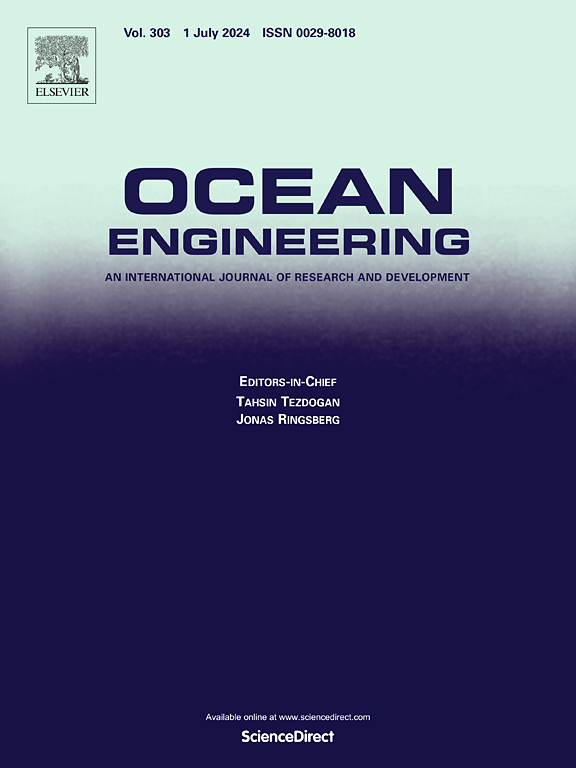Theoretical and experimental investigation of a two-stage X-structure vibration isolation system with inerter coupling for marine equipment
IF 4.6
2区 工程技术
Q1 ENGINEERING, CIVIL
引用次数: 0
Abstract
There is a growing concern about the use of the inerter to reduce low-frequency vibration and noise in ship and ocean engineering. The isolation performance of a traditional inerter-spring-damping vibration isolator outperforms that of a spring-damping isolator in the low-frequency range; however, it levels off at a constant value in the high-frequency range, and the resonant peak becomes large. This study proposes a novel vibration isolation system by horizontally integrating the inerter-spring-damping system into an X-structure and combining it with a two-stage vibration isolation mechanism. With the dynamic modeling, the transmissibility of the proposed vibration isolation system is derived through the frequency response function method. The acceleration, velocity inertance, and resonant frequency are theoretically analyzed by considering the influence of various structural parameters. Additionally, the effects of system parameters, including the number of layer, assembly angle, inerter ratio, and intermediate mass, on the isolation performance can improve in the low-frequency range and decline in the high-frequency range with a certain slope, and the resonant peak can be reduced, compared with the other nine types of scissor-like and vertical coupling structures. The multi-stage integrated structure can cumulatively expand the effective isolation frequency range while generating additional resonant and anti-resonance peaks. The isolation performance of the single-stage vibration system is validated using experimental prototypes and compared with the analytical method, demonstrating the correctness of the proposed theoretical model.
求助全文
约1分钟内获得全文
求助全文
来源期刊

Ocean Engineering
工程技术-工程:大洋
CiteScore
7.30
自引率
34.00%
发文量
2379
审稿时长
8.1 months
期刊介绍:
Ocean Engineering provides a medium for the publication of original research and development work in the field of ocean engineering. Ocean Engineering seeks papers in the following topics.
 求助内容:
求助内容: 应助结果提醒方式:
应助结果提醒方式:


